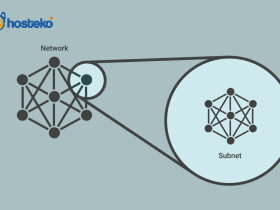Title: Definition, How it Works, Functions, and Types of Power Supply
For You. Get More Information from our site @iwanrj.com free.
The definition of power supply can usually be found in devices, homes, and even commercial buildings. For example, turning on the lights on the ship, turning on the computer, and so on. Because of its various benefits, this power supply has different models.
Nevertheless, almost all power supplies have the same way of working, namely generating voltage and converting it to DC power. Later, an irregular/unstable voltage will result from the power supply. However, this condition can produce adjustable power.
So that you understand more clearly the meaning of power supply, see the article that has been summarized below for you.
Definition of Power Supply
In simple terms, a power supply is a component that supplies power to one or more electrical loads. So, this power supply is designed to convert several different forms of energy, such as solar, mechanical, chemical, to electrical energy.
On computers and other electronic devices, the power supply is an important component. If there is no power supply, the device used cannot function properly. To access this power supply, you can see the cable used to transfer energy to the device.
If you open the cable, inside you can find a metal box that contains a fan and several cables that connect to the device. In its application, the power supply for computers is divided into several types, including AT power supplies, ATX power supplies, and BTX power supplies.
How Power Supplies Work
The way the power supply works is quite simple, when you turn on the power on the computer, the power supply will carry out checks and tests before running the computer system. If the test goes well, the power supply will send a signal to the mainboard as a sign that the computer system is ready to operate. Then, the power supply will divide the power it has according to the capacity required by each component.
Not only transmitting electric power, the power supply also maintains the stability of the electric current in these various components. Indirectly, the role of the power supply can be considered as important, like the CPU on a computer which is often referred to as the computer’s brain.
Power Supply Function
The power supply has various functions that can be used to meet electricity needs. To take advantage of the power supply function, you can change the voltage up or down, convert the power into direct current, and adjust the power for a smoother output voltage.
In more detail, here are the functions of a power supply apart from being electric power and power for electronic devices, including:
- Can increase or decrease the voltage, with a transformer we can change the voltage to AC / DC as needed.
- Provides multiple voltage distribution methods to meet the needs of electrical equipment.
- Convert AC voltage to DC voltage with half wave or full wave rectifier.
- Filter or filter non-stable DC voltage to stable DC voltage for equipment needs.
- Regulates the power supply output in proportion to the applied load.
Power Supply Components
In order for the applied voltage to be successful in a device, several follower components are needed. What are the power supply components? Here are some of them, namely:
The transformer changes the input voltage to the required output voltage level. This device can increase or decrease the voltage. Usually, the required DC voltage is much smaller than the incoming AC voltage from the main power source.
A combination of the two words electrode (anode and cathode) which functions to transfer power at the forward voltage and inhibit the current at the reverse voltage.
Resistor is a device that assists the Power Supply in lowering the voltage, dividing the voltage, and limiting the incoming electric current, so that it will be able to control the existing hardware devices on the motherboard.
An element that functions to convert AC current to DC voltage.
This component serves to regulate the electronic voltage. The goal is to maintain the stability of a device.
Type of Power Supply
As previously mentioned, the power supply on a computer is divided into several types, including BTX power supply, ATX power supply, and AT power supply. To find out a more complete explanation of the types of power supply, the following is more complete information.
1. AT Power Supply
The AT (Advance Technology) power supply was the initial power supply before the ATX type of power supply appeared. This power supply is usually used by old computer users. This type of power supply is the type that has been used the longest by computer users.
This AT power supply is usually used for AT motherboard types, such as computers with not too high specifications, such as Pentium 3 and 4 computers. AT power supplies are known to have electrical power cable specifications reaching 12 pins with low power, namely 250 watts.
AT power supply characteristics:
- Has 8-12 output terminals connected to the computer motherboard.
- Generally have power under 250 watts.
- Because the On and Off power buttons are connected to the computer case, turning it off must be done manually when the computer is shut down.
2. BTX Power Supply
Next up is the BTX power supply. This BTX power supply is used to help support computer equipment at home or offices. When viewed in detail, this power supply has two types of cables, namely the power cable that leads to the motherboard and the SATA cable.
Compared to other power supplies, BTX is a much better type of power supply compared to other types of power supplies. So, do not be surprised if this type of power supply is one of the most widely used types of power supply by computer users.
3.ATX Power Supply
The last type of power supply is ATX (Advance Technology Extended) power supply. This ATX power supply is a development of the previous type of AT power supply discussed. Uniquely, this ATX power supply has its own on/off system, making it easier for users to turn it off automatically.
The ATX power supply also has much greater power compared to the TS type. Usually the use of this power supply is intended for computer devices that have AMD, Intel Pentium III, and Intel Pentium IV processors.
Features of the ATX Power Supply:
- Has 20 to 24 output terminals connected to the motherboard.
- Uses more power.
- When the PC is shut down, the power supply will turn off completely.














